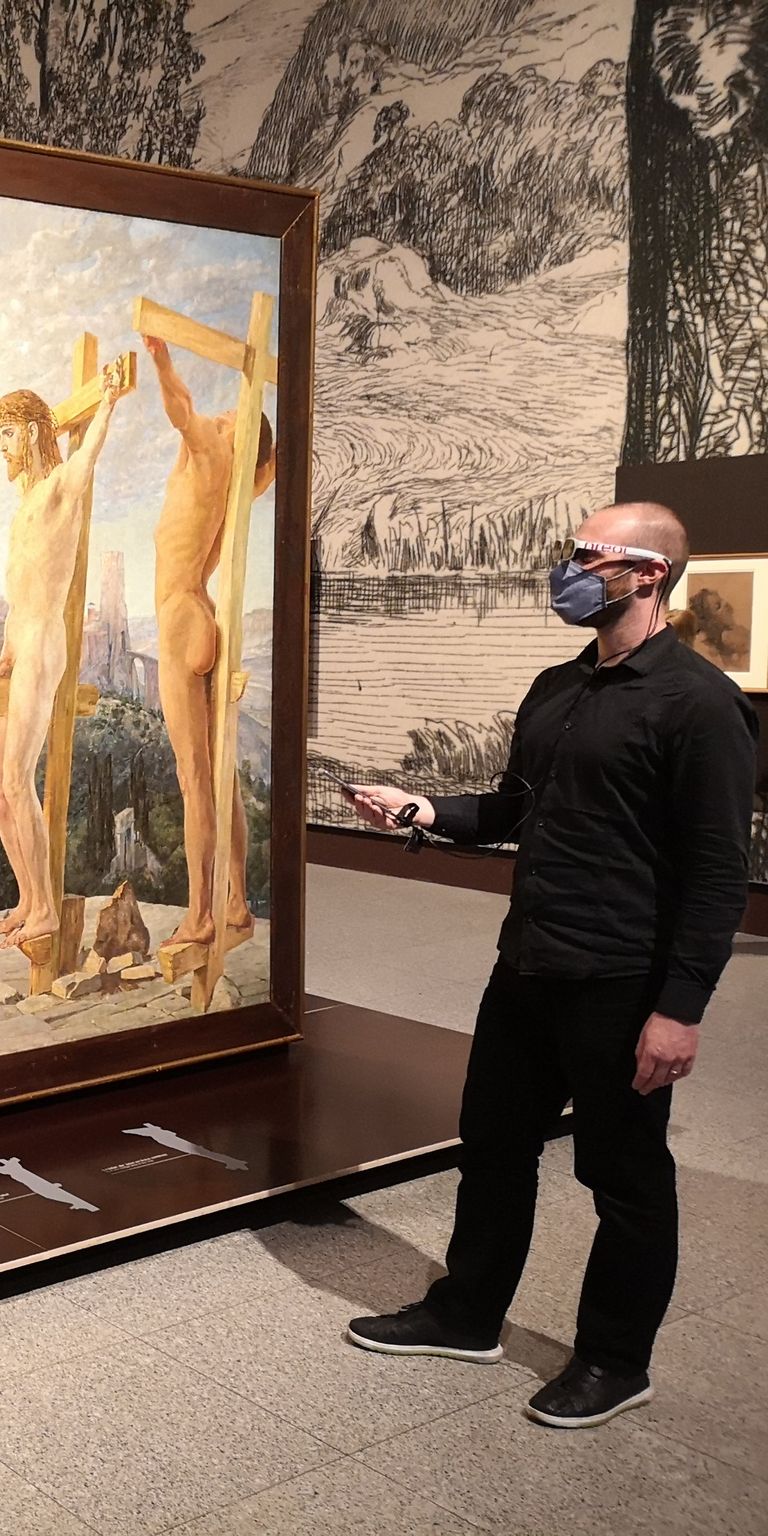Augmented Reality: When Art comes to life
As the art and exhibition hall of the Federal Republic of Germany, the Bundeskunsthalle Bonn is a location for extraordinary exhibitions on art, culture and science. To create an unforgettable experience for visitors, innovative technologies are also used: For example, the monumental painting "The Crucifixion of Christ" by Max Klinger (1857-1920) can be experienced through augmented reality with 3D effects and holographic images - even from home. Due to Corona the exhibition was closed for four months.
Max Klinger, The Crucifixion of Christ, 1890, Museum der bildenden Künste Leipzig, oil on canvas, 251 × 465 cm - presentation in the exhibition "Max Klinger and the Work of Art of the Future," Bundeskunsthalle, Bonn, 2020/2021
Rediscovering Max Klinger's gigantic oil painting The Crucifixion of Christ for visitors with the help of augmented reality, i.e. state-of-the-art technology, was a challenge. The implementation with Telekom MMS was a lot of fun and is an enrichment for the tasks of art education in exhibition halls. Christian Gänsicke, Head of Education (Deputy Press Officer)
Benefits for our Customer
View art from a new perspective with addiditional information
Win additional target groups such as digital natives and technophile visitors
Linking modern technology and art
About Bundeskunsthalle (Art- and Exhibition Hall)
With around 610,000 visitors per year (status 2019), the Art and Exhibition Hall of the Federal Republic of Germany, or Bundeskunsthalle for short, is one of the most visited museums in Germany. The Bundeskunsthalle provides an exhibition area of 5,600 square meters and regularly shows up to four exhibitions at the same time from the fields of art and cultural history, science and technology. The program focuses on art from all epochs.
The Bundeskunsthalle has developed different audiences, with whom dialogue is always sought. The task of the Bundeskunsthalle is to be a showcase, both nationally and internationally, for that open concept of culture which is central to the identity of the Federal Republic of Germany through its exhibitions and events.
